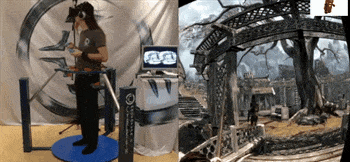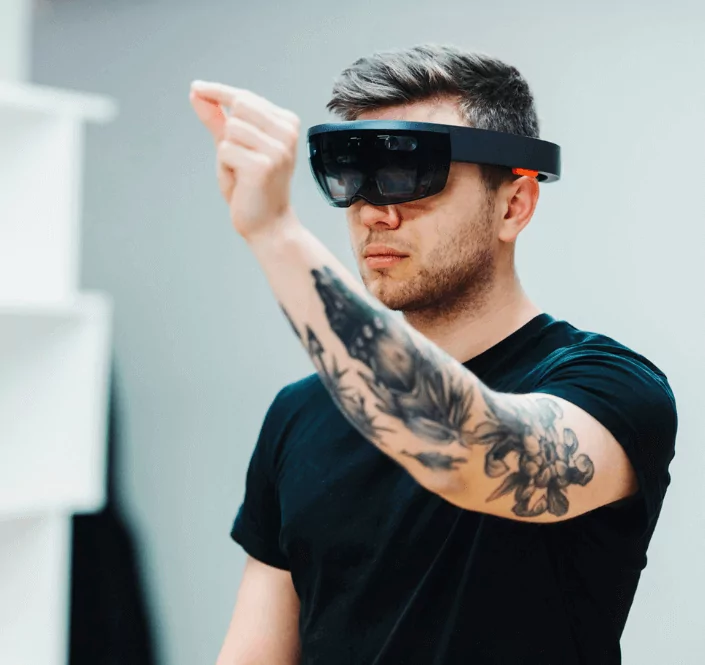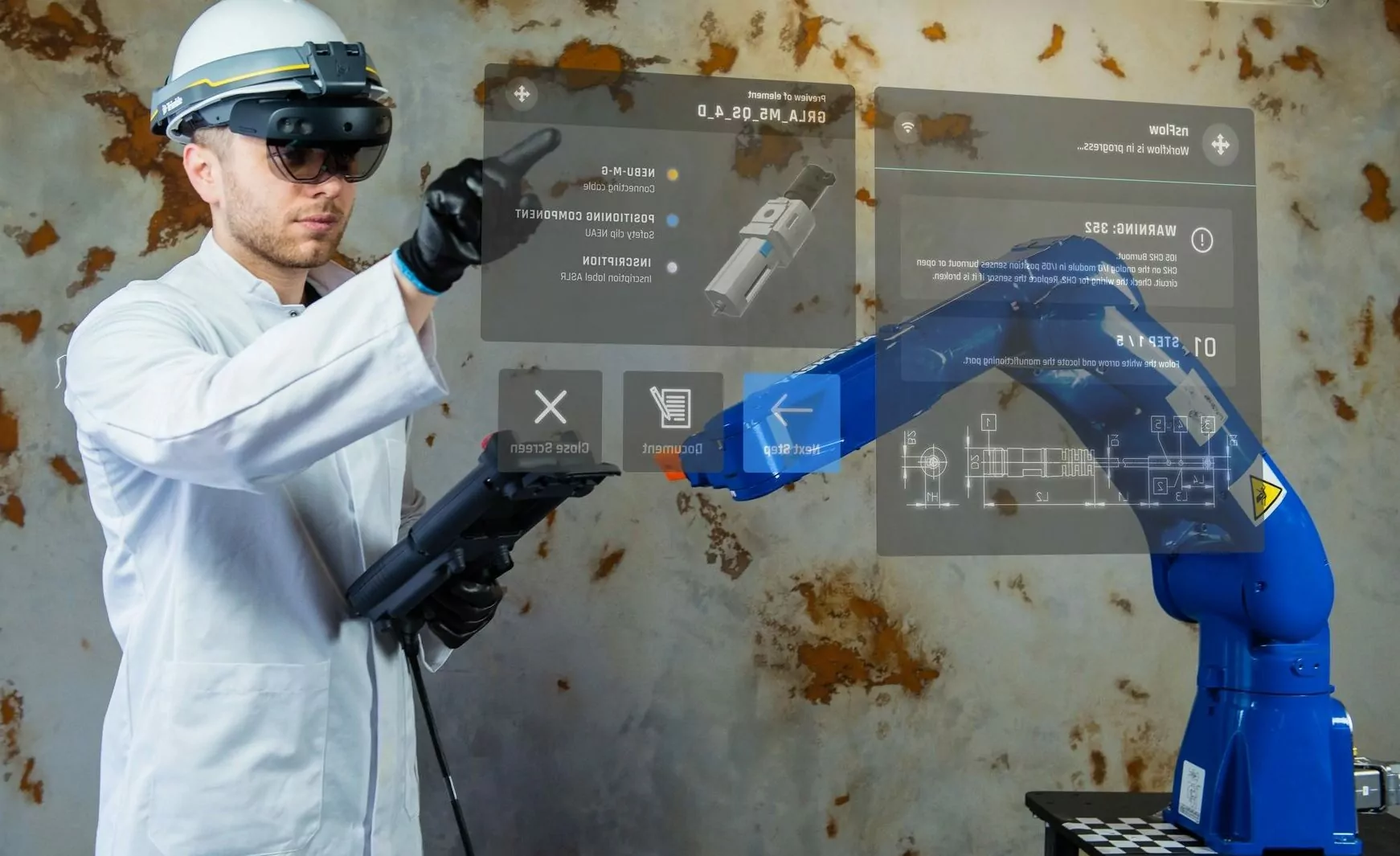Both augmented reality and virtual reality are gaining their momentum and earning ever-growing attention from businesses and media. But the number of confusions around these technologies nonetheless is not dropping down.
Virtual reality and augmented reality are often referred to as of a like nature. But in fact, both technologies have fundamental differences and distinct areas of application. Augmented reality vs virtual reality what are these differences and what potential they hold for businesses – read further in this blog post.
What is virtual reality?
Virtual reality (VR) completely replaces your field of vision with a computer-generated simulation, making you feel like being somewhere else.
We can compare VR to immersive cinema experience when everything you see around is not your real surrounding, but video content. Only instead LED screens like in immersive cinema, a special headset is used for filling your field of vision with VR content. Furthermore, depending on a given headset’s characteristics (sensors, cameras, motion controllers, haptic feedback), a user can move around the virtual space and have a more dynamic experience, than in immersive cinema.

Areas of application:
- VR in gaming and entertainment helps to create impressive full-immersion experiences.
- Virtual reality in education makes it possible to recreate learning environments that are expensive, dangerous or impossible to access in real life: pilot training, battlefield simulation, “a trip to the Moon” or “going back in time” during a school class.
- VR in real estate, architecture and interior design is used for showcasing remote or future properties through virtual tours, presenting design ideas to customers.
- In engineering and vehicle manufacturing virtual prototypes can be tested before building real ones.
Supporting hardware: PC-connected headsets (Oculus Rift, VR headsets, PlayStation VR, HTC Vive) and standalone headsets (Oculus Go, Samsung Gear VR )

What is augmented reality?
Augmented reality (AR) instead of fully replacing your field of view, slightly expands it with computer-generated content (images, interactive 3D objects, floating holograms, videos, texts etc.) layered on top of you real surrounding. Just like terminator vision:

AR works as a valuable link between the real and digital worlds by enhancing the former with the relevant data that helps to use and interact with the surrounding environment more effectively.
“I’m excited about augmented reality because unlike virtual reality which closes the world out, AR allows individuals to be present in the world but hopefully allows an improvement on what’s happening presently… That has resonance.” – Tim Cook, CEO at Apple
Areas of application: AR is more flexible than VR, as it doesn’t require the whole virtual world to be created, but just separate elements that can be used for enhancing practically ANY real-life situation. Thus, areas of AR application are limitless:
- Marketing and retail – for providing a vivid experience of products and services to the end-consumer. For example, IKEA uses AR for showing how a given piece of furniture will fit in a customer’s apartment.
- Education – for showing a 3D model of a solar system or human anatomy in a classroom.

- Training and knowledge retention – for conducting hands-on training, providing instructions, pointers and hints in from if trainees’ eyes.
- Repair and maintenance – for displaying manuals and instructions directly in the workers’ field of view.
- Machine design and industrial automation – for testing equipment or vehicles, checking their actual dimensions, ergonomics and correspondence to user environment before actually building them.
- Logistics – for displaying the shortest route through the warehouse in front of workers’ eyes, as DHL does.
- Leisure and entertainment – for catching Pokemons or having AR-guided tour while travelling.
Supporting hardware: varies from widely available smartphones and tablets to special heads-up displays, smart lenses and AR glasses (Microsoft HoloLens, Vuzix, Magic Leap One, Epson Moverio, Google Glass Enterprise Edition, etc.).
Key differences between augmented reality and virtual reality
| VR | AR | |
| Goal | To recreate an environment or situation. | To enhance an existing real situation. |
| Accessibility | Requires creation of dedicated content for ensuring immersive experience. Can be displayed only via VR headsets. | Content for AR varies from simple texts and images to more complicated 3D models. AR applications can run on various types of hardware: from smartphones to special AR glasses. |
| Application | VR application is focused on content, and thus limited to areas of full-immersion experiences. Best way to use: by “bringing” users to other worlds. | AR links the real world with digital content and thus can be applied to a wide range of situations. Best way to use: by bringing relevant contextual information to users’ real life. |
* * *
Both AR and VR are powerful technologies. But whereas we already saw or can imagine what VR is capable of, AR holds a huge potential that is yet to be discovered and already impacts business context greatly. Such giants as Apple, Google, Ford, Boeing, Bentley, BMW, DHL, IKEA, Unilever, Caterpillar, CSIRO, ASTOR, HoloCrane are just a few companies known for piloting and adopting AR.
We share this point of view and see greater potential in applying AR to complex business and production challenges than VR. Our point of view is backed up with practice as we have a number of AR projects and pilots behind us. One of our AR products – nsFlow – is dedicated to making AR adoption easy and cost-effective.
Check out how AR can streamline your business and manufacturing processes by taking the chance of becoming an early adopter of nsFlow. And don’t forget to follow us for more updates on IT, technology and innovation.




